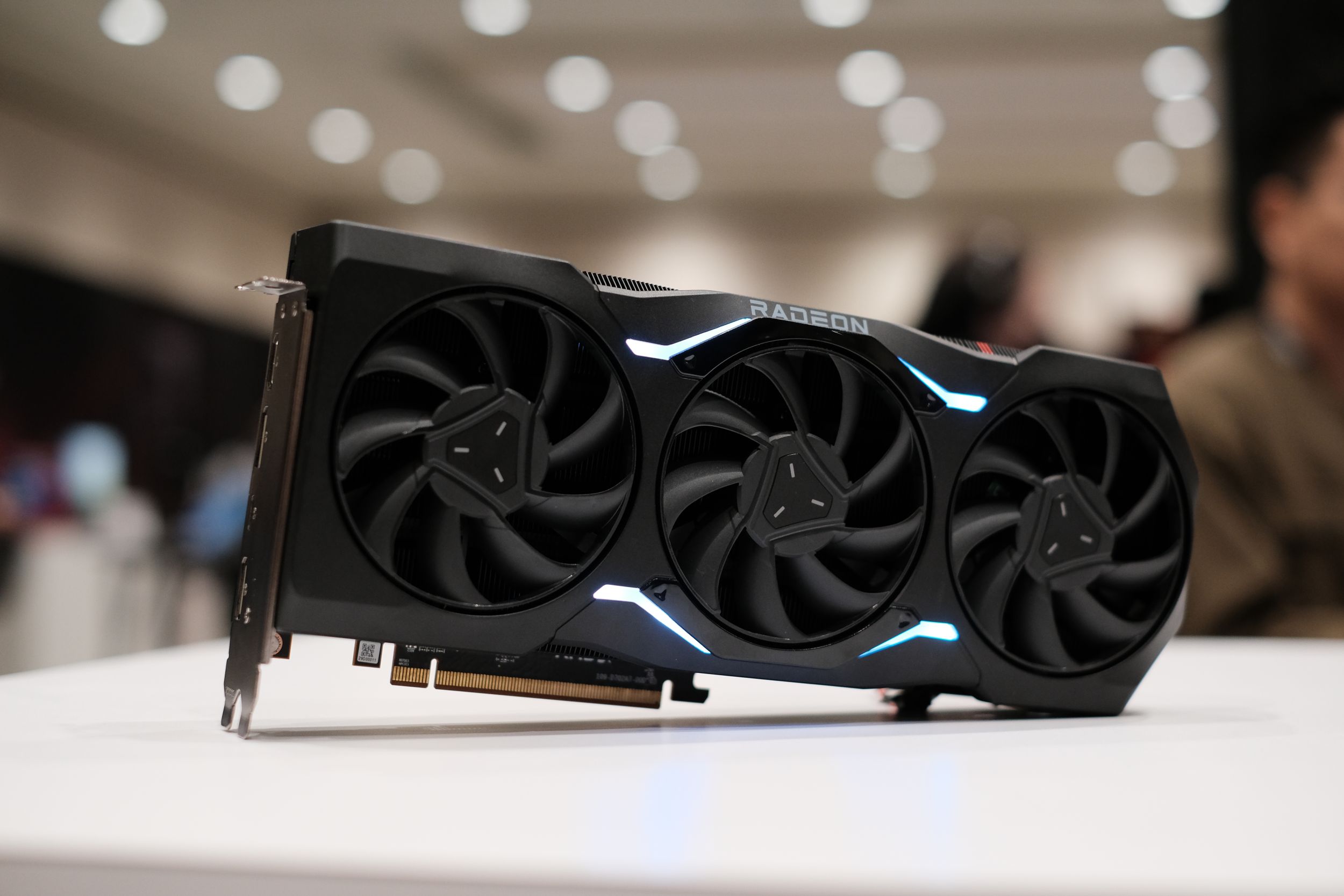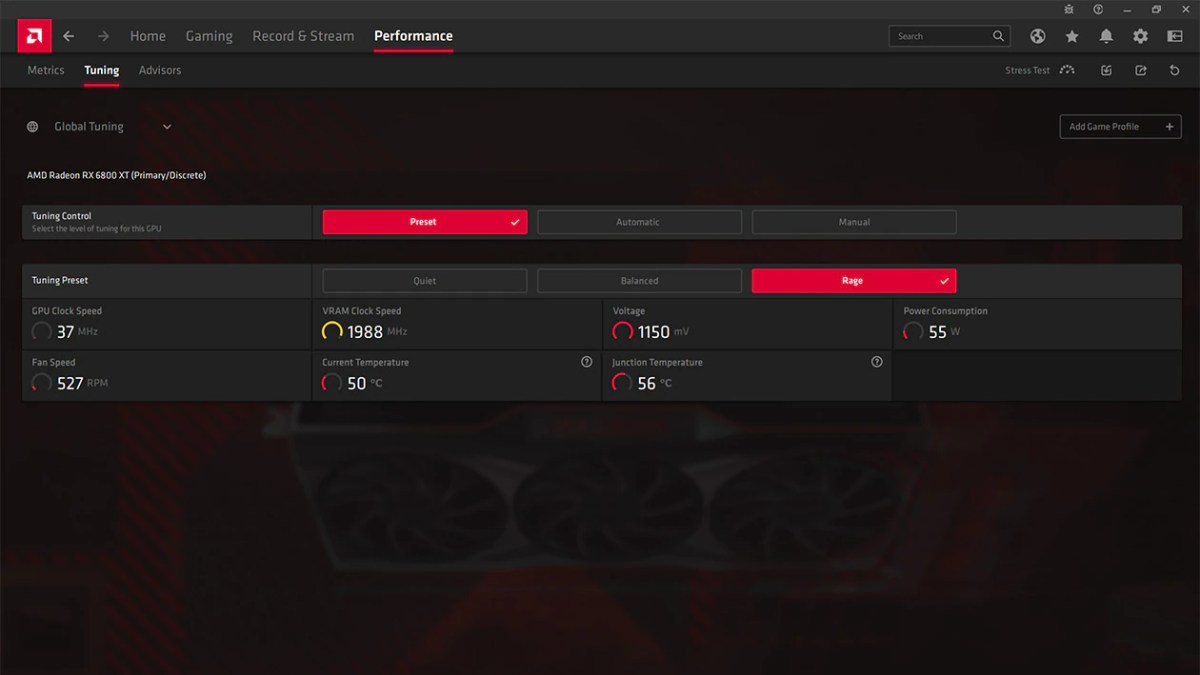
 Image: AMD, Nvidia
Image: AMD, Nvidia
Nvidia has become one of the 10 most valuable companies in the world in just a few months, crowning a trend that was started with the crypto boom. But while Nvidia is raking in record sales with future technologies, as a gamer I’ve turned away—at least for now.
I’ve always thought brand loyalty was a silly concept, especially in the technology sector. A product should be evaluated on its own merits, based on criteria relevant to its intended use. A graphics card, for example, is evaluated on factors such as performance, energy efficiency, range of functions, and price.
The company that manufactures the product should at most be included in the decision if it stands out for social commitment or environmentally friendly production, for example.
GeForce RTX 4090 Founders Edition

 Read our reviewPrice When Reviewed:$1,599Best Prices Today:$1599.99 at Best Buy | $1981.86 at Walmart | $2,995 at Amazon
Read our reviewPrice When Reviewed:$1,599Best Prices Today:$1599.99 at Best Buy | $1981.86 at Walmart | $2,995 at Amazon
Now, no one can claim that Nvidia makes bad graphics cards. On the contrary, the company has set many trends in recent years: G-Sync, ray tracing, DLSS, and Reflex, to name a few. Especially in the upper class, Team Green’s ferocious RTX 4090 has no rival. And yet, having recently found myself due for a PC upgrade, I opted for an AMD graphics card.
Although my GeForce RTX 2080 Ti has served me well for years, I recently replaced it with an RX 6950 XT from AMD. Here are my very personal reasons for doing so.
Further reading: Want a glimpse at the other side of things: Here are four reasons why my colleague switched from AMD Radeon to Nvidia GeForce this generation.
The pitfall of new technologies
In the past few years, Nvidia has introduced one new technology after another and ultimately (at least currently) won the duel against AMD. With ray tracing, Nvidia has set a graphics trend that will probably be with us for some time to come and in which Team Green is a pioneer. The DLSS upscaling technology is still ahead of the AMD and Intel alternatives.
However, it is becoming more and more of a trend that these innovations are not really backwards compatible—and that is a disaster from the consumer’s point of view. For example, said Deep Learning Super Sampling (DLSS), whose latest version 3 including frame generation is only compatible with Nvidia’s current 40-series cards.
So if you bought a 20- or 30-series card in the past years, possibly for a lot of money given the graphics card prices of the last few years, you are now already looking down the tube.
There are of course technical reasons why these new technologies do not work on old cards. Nevertheless, as a consumer I don’t like the feeling when an expensive product is consigned to the antique department by the manufacturer after only a few years. Especially since there is another way, as AMD shows.
Even though Nvidia has good arguments on its side from a technical point of view, AMD has not been idle in recent years either—and is pursuing a completely different strategy. AMD makes its in-house technologies available to as many users as possible. One example of this is FreeSync, which, in contrast to G-Sync, works with a significantly larger selection of monitors that are often also cheaper than counterparts with G-Sync certification.
It becomes even clearer when comparing FSR against DLSS. While AMD’s technology is compatible even with competitor graphics cards from Nvidia and Intel, Nvidia not infrequently excludes GPUs from its own house when it comes to new functions. For example, DLSS only works when using an RTX GPU, older GTX models are left out in the cold, and DLSS 3 Frame Generation only works with the current RTX 40-series graphics cards. AMD relies on industry standards and open source solutions, while Nvidia implements proprietary solutions.
It felt like Nvidia was constantly bringing new features to the market without really addressing the needs of existing customers. Team Red may be a little behind in the latest high-tech features, but it relies on open source technologies and doesn’t have to hide at all in fundamental areas like rasterization performance and memory.
And even if ray tracing is now implemented in more and more games, without ray tracing you can play any game, but without rasterization you can’t play any game—apart from a few exceptions with path tracing.
AMD concentrates on the essentials
mentioned in this article
Radeon RX 7900 XTX

 Read our reviewPrice When Reviewed:$999Best Prices Today:$919 at Newegg | $949.99 at Amazon | $971 at B&H Photo
Read our reviewPrice When Reviewed:$999Best Prices Today:$919 at Newegg | $949.99 at Amazon | $971 at B&H Photo
While Nvidia, also as a result of the company’s shift towards AI technologies, is indeed a driver of innovation, AMD has increasingly concentrated on the essentials in recent years. A shining example is the built-in video memory, which is becoming increasingly important at higher resolutions and levels of detail.
Only recently, Nvidia has once again shown with the RTX 4060 that the company does not succeed in the balancing act between the use of new technologies and a solid basic configuration. A strong ray tracing performance and DLSS 3 are of little use if the 8GB video memory is no longer sufficient for modern games in full HD. Especially since both technologies further increase the memory requirements.
AMD is not immune to these errors either, as the Radeon RX 7600 with only 8 GB of RAM also shows, but it often has a better memory configuration, especially in the midrange and upper class. An illustrative example of this is the RX 7900 XTX, which not only has significantly more video memory, but is also cheaper than its Nvidia counterpart, the RTX 4080. And even in terms of pure rasterization performance, AMD cards are often on a par with or even ahead of Nvidia at the same price.
Better price-performance ratio
AMD Radeon RX 7600
 Price When Reviewed:$269Best Prices Today:$269 at AMD | $269.99 at Amazon | $269.99 at Best Buy
Price When Reviewed:$269Best Prices Today:$269 at AMD | $269.99 at Amazon | $269.99 at Best Buy
If we leave the RTX 4090 aside for a moment (at a starting price of $1,600 it’s irrelevant for my eventual purchase decisions anyway), you will find an AMD equivalent for every Nvidia card that is on par in terms of memory equipment and rasterization performance. And in most cases, the AMD card will be the cheaper alternative.
Of course, if you value ray tracing and prefer DLSS to AMD’s alternative FSR, this question does not arise. Because in these areas Nvidia simply cannot be beaten at the moment, and it is precisely for this reason that the company can also be very creative in its pricing.
AMD, on the other hand, must and wants to convince with classic arguments, namely solid performance, accessible alternative technologies, and ample memory at an attractive price (at least compared to the competition). And if, like me, these points are ultimately decisive for you, then you should at least consider Team Red for your next PC upgrade.
Further reading: Nvidia GeForce RTX 4070 Ti vs. AMD Radeon RX 7900 XT
AMD Software Adrenalin Edition vs. Nvidia GeForce Experience
But not only the hardware, but also the software should play a role in the purchase decision.
As a long-time user of an Nvidia graphics card, it is still incomprehensible to me why the manufacturer does not manage to combine all functions in one software program. If I want to change the monitor resolution or refresh rate, activate G-Sync or use Dynamic Super Resolution, I have to do this in the Nvidia control panel, which, by the way, still looks the same as it did 20 years ago.

AMD
AMD
AMD
If, on the other hand, a game is to be optimized automatically or the game recorded or streamed via ShadowPlay, then GeForce Experience is necessary. As an old hand, I now know where to find which setting, but for newcomers it is already user-unfriendly if you have to click through two applications until you find the desired setting. In addition, the use of GeForce Experience requires a user account.
With AMD, on the other hand, the AMD software Adrenalin Edition can be installed together with the driver. There is no need to log in and all functions can be found clearly in one application.
Further reading: Want a glimpse at the other side of things: Here are four reasons why my colleague switched from AMD Radeon to Nvidia GeForce this generation.
Editor’s note: This article was translated from German to English, and originally appeared on pcwelt.de. The first version of this article stated that GeForce Experience is needed to install new drivers. That is not correct, drivers can be downloaded and installed from the Nvidia homepage at any time. This article was also updated to link to our companion story about switching from AMD to Nvidia.
Author: Kris Wallburg, Redakteur

Kris schreibt besonders gerne über Gaming und Hardware, fühlt sich aber in fast jedem Technik-Thema zuhause.
Recent stories by Kris Wallburg:
7 must-know Steam tips to level up your PC gaming experience6 reasons to skip prebuilt PCs and do it yourselfDiablo 4 gets a massive, game-altering patch ahead of its first season



